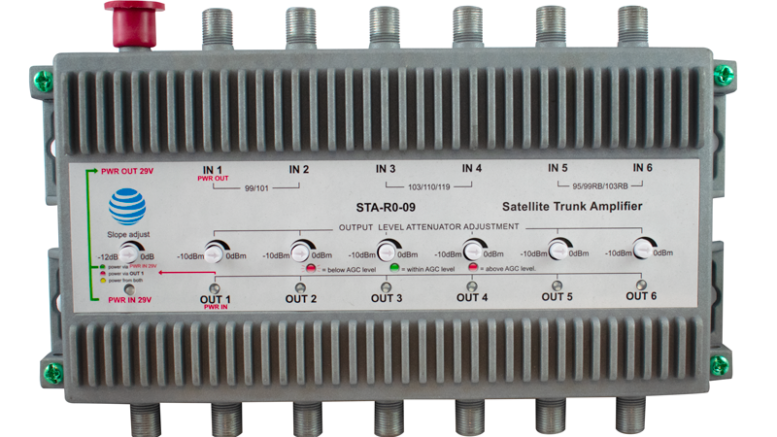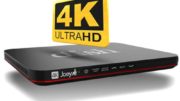I’ll admit, this question isn’t asked as much as it once was. Back in satellite TV’s hobbyist days, it was common for folks to overbuild their systems. It was, first and foremost, a point of pride. But it was also a way to make sure you were futureproof. So, many people put in satellite amplifiers downstream from the dish. But should you do it? It all boils down to one question: are you in a home, or somewhere else?
When and how satellite amplifiers are used
Satellite TV amplifiers are used right after the power inserter to allow for very long runs from dish to multiswitch. That’s it. An amplifier is not going to help you get more channels and it’s very unlikely to help you with rain fade. That’s just not how digital signals work. You also won’t be able to put them after a SWM multiswitch, for reasons I’ll explain below. Let’s take a quick look at situations where an amplifier will help:
Scenario 1: Tall building with a dish on the roof
Whether you’re serving one room or many, a long run from the roof to the equipment closet deserves an amplifier. The amp should be placed as close to the roof as possible and should be designed for “trunk” use like the one above. Satellite amplifiers need to be a good bit more complex than regular ones.
Scenario 2: Distributing to multiple closets
If you’re feeding a lot of receivers, you’re probably going to have equipment closets in several locations. Amplifiers can help you compensate for the loss due to adding splitters and taps. They are used whenever signal levels drop below the appropriate input window for the SWM multiswitch, between -25 and -45dBm.
Scenario 3: If you’re using a modulator or headend system
If you’re operating a headend system, the output from that system can be amplified so it can reach a lot of different locations. These systems are common in bars, hotels, and some apartment complexes.
And that’s pretty much it.
Residential users should almost never use amplfiers for satellite. A DIRECTV or DISH satellite antenna should be good for 150 feet between the dish and the multiswitch or first receiver, and so there should be very little need for an amp. You should always use a satellite meter to measure signal levels. Even though there are planners and loss calculators, there is no substitute for real signal levels in the field.
Why you can’t amplify after the multiswitch
DIRECTV’s SWM distribution and DISH’s MoCA implementation for its Hopper DVRs do not allow amplification at all. These systems are designed for extremely low latency and require two-way amplification. That means once you get to the point where you lose signal, which is usually about 150-200 feet, you cannot use an amplifier to bring it back.
In the past, people have pointed out amplifiers that say they are usable for SWM systems. It’s true, some amps were labeled that way, but the companies involved were told early on that amps can’t be used that way. The only options are to use a high-powered multiswitch like the SWM30HP, to reduce the number of splitters, or to use RG11 cable. With these options, it’s possible to take the cable run to about 300 feet. Beyond that it’s just not possible.
Get the parts and accessories you need from Solid Signal
Solid Signal is your home for the parts and accessories the professionals use! Shop our great selection of satellite, cellular, and pro-grade equipment now! If you’re not sure what you’re looking for, call us at 888-233-7563 or fill out the form below.





